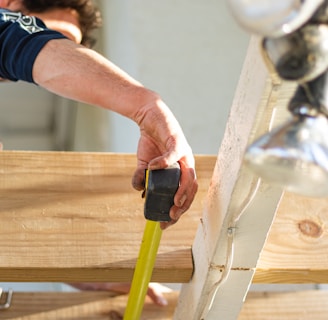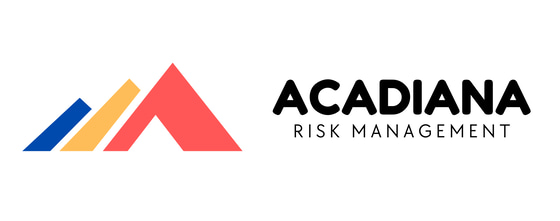What Is Builder’s Risk Insurance? | 11 Must-Know Facts to Protect Your Construction Project
What Is Builder’s Risk Insurance? Learn the top 11 crucial insights every builder, contractor, and homeowner needs to safeguard their construction projects from costly setbacks.
BUILDER'S RISK SERVICES
Ryan Jones
5/23/20254 min read


What Is Builder’s Risk Insurance?
Builder’s risk insurance is a specialized type of property insurance designed to cover buildings under construction. Also known as “course of construction insurance,” it protects against damage to the building, materials, and equipment caused by events like fire, theft, vandalism, or certain weather-related incidents.
This type of coverage is essential for contractors, developers, and property owners because traditional property insurance often excludes construction projects.
Builder’s risk insurance fills that critical gap, ensuring your project isn’t derailed by unexpected mishaps.
Why Builder’s Risk Insurance Is Essential
Construction sites are dynamic and inherently risky environments. Materials get stolen, fires can break out, and storms can delay or damage progress.
Key Reasons It’s Crucial:
Protects your financial investment: Without it, you'd absorb the full cost of repairing or replacing damaged property.
Ensures continuity: Helps avoid project delays by covering unexpected events.
Risk transfer: Spreads risk away from your own funds and onto the insurance company.
Whether it’s a minor setback or a major catastrophe, builder’s risk insurance can make the difference between recovery and ruin.
Key Coverages Under Builder’s Risk Insurance
A well-structured policy covers a broad range of construction-related exposures:
Building and Materials: Covers the structure itself and construction materials onsite, in transit, or temporarily stored.
Tools and Equipment: Coverage can extend to construction tools and heavy machinery.
Scaffolding & Temporary Structures: Includes protection for scaffolding, fencing, and temporary buildings.
Debris Removal: Pays to clear damaged materials after a covered event.
Soft Costs: Some policies may include design fees, permits, and loan interest due to delays.
This protection ensures that your timeline and finances stay as close to the original plan as possible.
What’s Not Covered in Builder’s Risk Insurance
While robust, these policies don’t cover everything. Exclusions commonly include:
Employee injuries (handled by workers’ comp)
Contractor errors or poor workmanship
Acts of war or terrorism
Earthquakes or floods (usually require separate endorsements)
Normal wear and tear
Understanding the limits of your coverage ensures you won’t be caught off guard during a claim.
Who Needs Builder’s Risk Insurance?
It’s not just the contractor’s responsibility—several parties benefit from this policy:
Contractors: To protect their materials, equipment, and labor investment.
Property Owners: To safeguard their future asset before it’s finished.
Developers: Especially in large-scale or multi-building projects.
Lenders: Often require it as part of financing terms.
Essentially, anyone with a financial interest in the project should consider getting covered.
When Should You Purchase a Builder’s Risk Policy?
Timing is key. The policy should be in place before construction begins. It typically ends when:
The building is completed and ready for use
Ownership is transferred
A set number of days post-completion (e.g., 30 or 60 days)
Extensions or renewals may be needed for delays or phased construction.
Types of Builder’s Risk Insurance Policies
Not all builder’s risk policies are the same. Here are the most common types:
Named Peril: Covers only the risks specifically listed (e.g., fire, wind).
All-Risk: Offers broader coverage, protecting against all causes not explicitly excluded.
Project-Specific: Covers one particular job or location.
Reporting Form: Ideal for contractors handling multiple projects simultaneously.
Choosing the right type depends on the scale and nature of your operations.
How Much Does Builder’s Risk Insurance Cost?
Costs vary based on:
Project value
Location and risk exposure
Type of construction
Policy limits and duration
Typical premiums range between 1% and 5% of the total construction budget. So for a $500,000 project, insurance might cost $5,000 to $25,000.
Always get multiple quotes and consider bundling with other policies for discounts.
How to Choose the Right Policy
When shopping for coverage, keep these points in mind:
Customization: Can you tailor the coverage to fit unique risks?
Policy limits: Are they high enough to cover worst-case scenarios?
Insurer reputation: Does the company have solid construction industry experience?
Claims support: Will they respond promptly in a crisis?
A licensed insurance broker specializing in construction is your best ally here.
Common Mistakes to Avoid
Avoiding these pitfalls can save money and headaches:
Underinsuring: Leads to major out-of-pocket expenses.
Overlapping coverage: Paying twice for the same protection.
Not reading exclusions: Leads to denied claims.
Miscommunication: All stakeholders should understand what’s covered.
Smart planning up front equals fewer surprises later on.
Builder’s Risk vs. General Liability Insurance
While both policies are important, they serve different functions:
Builder’s Risk Insurance General Liability Insurance
Covers property and materials Covers injuries and third-party damages
Applies during construction Applies before, during, and after projects
Protects project investment Protects against lawsuits and legal fees
Ideally, construction businesses should carry both for full protection.
Real-World Scenarios Where It Saved Projects
Storm Damage: A sudden hailstorm destroyed roof trusses in transit—insurance paid for replacements, avoiding weeks of delays.
Theft at Site: Tools and copper wiring stolen overnight—builder’s risk covered $25,000 in losses.
Fire Breakout: A welding mishap ignited a temporary structure—policy paid for repairs and cleanup.
These examples show the true value of being prepared.
Legal and Regulatory Considerations
Permits: Many jurisdictions require proof of insurance to issue construction permits.
Loan Requirements: Lenders often mandate coverage to protect their investment.
Building Codes: Some areas require specific risk policies based on zoning and environmental risk factors.
Consult with your local authority or an insurance advisor to stay compliant.
FAQs About Builder’s Risk Insurance
Q1. Is builder’s risk insurance required by law?
No, but it may be required by lenders or local permitting agencies.
Q2. Can I add coverage for earthquakes or floods?
Yes, but they are typically added as separate endorsements.
Q3. Does it cover subcontractor mistakes?
Not usually—errors and omissions are often excluded unless separately covered.
Q4. Who pays for the builder’s risk insurance?
It varies—it could be the contractor, owner, or shared, depending on the contract.
Q5. How long does the policy last?
Typically 3–12 months, extendable if the project overruns.
Q6. Can I cancel the policy early if the job finishes ahead of schedule?
Yes, but there might be a minimum premium or cancellation fee involved.
Conclusion: Safeguard Your Build with the Right Coverage
Construction is full of uncertainties—but builder’s risk insurance helps turn chaos into confidence. By covering your structure, materials, and delays, this vital policy shields your project from the financial storms that might otherwise derail it.
Before your next build, take the time to explore builder’s risk coverage. A small investment upfront can save thousands—or even millions—later.
Next steps? Get a Free Quote
Fill out your details here.
By Rye and Friends
Your trusted partner for business insurance solutions.
contact
request A quote
© 2025. All rights reserved.
SERVICES
Builders Risk / Course of Construction
